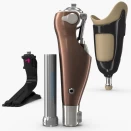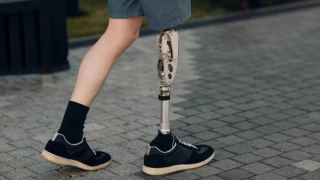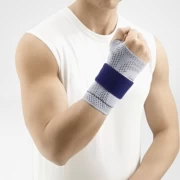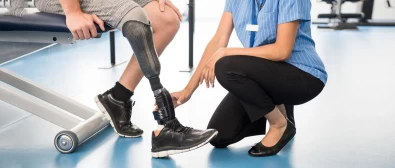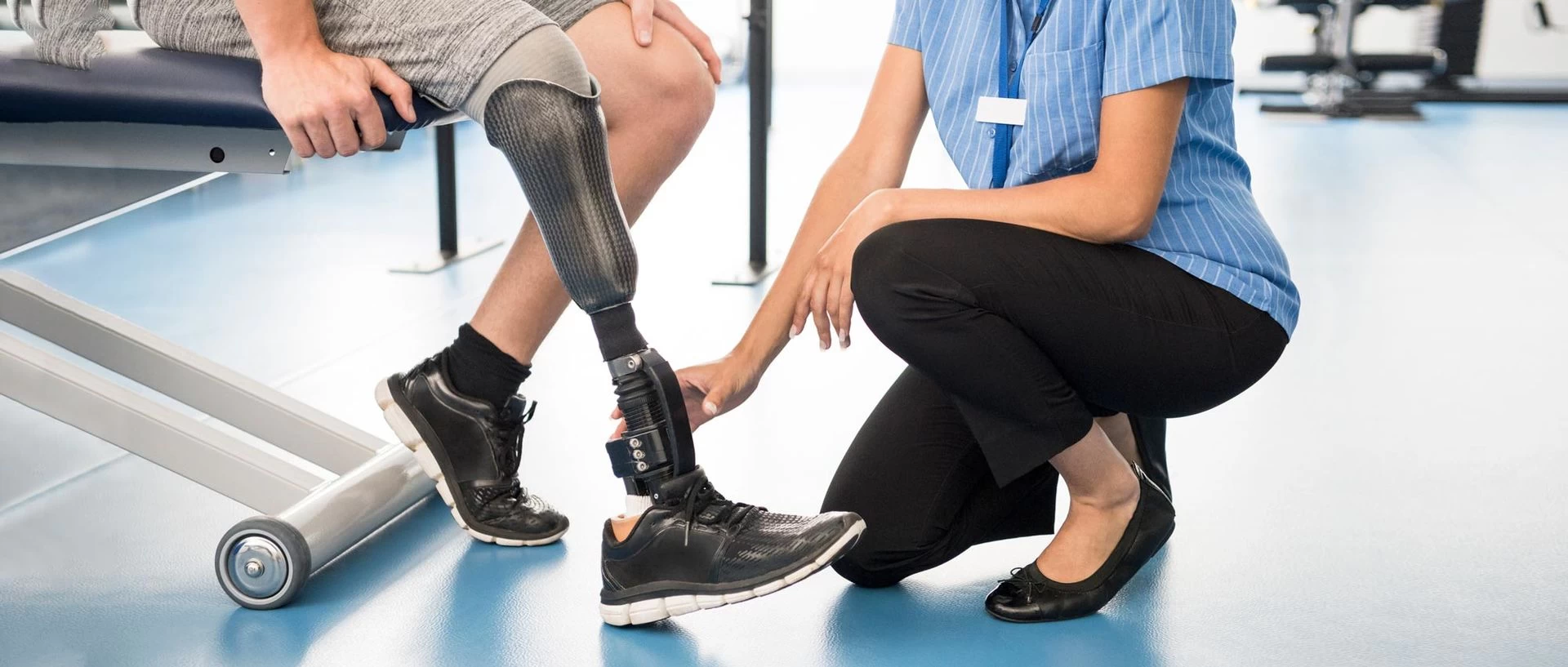
What Should You Know About Prostheses and Orthotics?
- What Should You Know About Prostheses and Orthotics?
- What Do Orthoses and Prostheses Mean? What are the Types of Prosthesis?
- What is the Prosthesis Used For?
- What are the Types of Prosthesis?
- Leg Prostheses
- Knee Prosthesis Types
- Types of Under-Knee Prosthesis
- Arm Prostheses
- Athlete Prostheses
- Child Prostheses
- Bathroom Prostheses
- Cosmetic Prostheses
- What is Orthosis?
- What are the Types of Orthoses?
What Does Prosthesis Mean, Hip prosthesis, leg prosthesis, prosthesis types, knee prosthesis types, hip prosthesis types, what is orthosis, orthotic prosthesis, orthosis types, orthosis shoes
What Do Orthoses and Prostheses Mean? What are the Types of Prosthesis?
The question of what prosthesis means is often asked, especially by people who hear the terms prosthesis and orthotics for the first time. We can say that these concepts, which we encounter in many places in our daily lives, actually represent the most innovative inventions of the medical world.
Various mechanical parts that are needed as a result of the loss of limbs in the body due to birth or accidents and perform the same function as these limbs are called prostheses. There are many prostheses in the sector, including hip prosthesis, leg prosthesis and arm prosthesis. We, as Proclinic, have prepared this special content in order to give you a detailed information about prosthesis and orthosis.
What is the Prosthesis Used For?
Prostheses are used to replace limbs lost for various reasons. With the developing technology and today's state of medicine, prostheses can fully ensure the visual integrity of the body. In addition, prosthetic types can perform the tasks of limbs such as legs and arms.
What are the Types of Prosthesis?
The prostheses, which are produced separately for each limb of the body, are designed by prioritizing the comfort of the person. For example, leg prostheses can be produced in different ways depending on where the person is amputated. According to the limbs, there are currently many types of prostheses such as knee prosthesis types, hip prosthesis, leg prosthesis, hand prosthesis types and arm prostheses.
Leg Prostheses
Leg prostheses are artificial limbs that replace the congenital or amputated leg. These limbs may vary according to their function, type and amputation site. Leg prosthesis types are roughly divided into two as below the knee and above the knee prostheses. With leg prostheses, patients can make their daily lives easier and continue functions such as walking, climbing stairs and even driving.
Knee Prosthesis Types
If the person is amputated above knee level , these people use prostheses that cover the below the knee and part of the knee section. These prostheses, which include hip prosthesis types, are clamped to the upper part of the knee or separated from the leg with various auxiliary tools. Thanks to these prostheses, which are frequently used by diabetics, vascular problems and those who have had accidents, people can easily adapt to daily life.
Types of Under-Knee Prosthesis
Under-the-knee prosthesis types, as the name suggests, are used if they have suffered a limb loss from the bottom of the knee. Since limb losses in the legs cause problems in terms of walking, we can say that under-the-knee prosthesis types are of great importance. Many people who lose their limbs with below-the-knee prosthesis types can raise their living standards much higher.
Arm Prostheses
Arm prostheses, unlike leg prostheses, are much more advanced and many working parts. In hand and arm losses, people experience deficiencies in performing many activities in daily life.
Advanced arm prostheses are specially produced to fully perform these functions. Arm prostheses, which have special functions such as grip, movement of elbow joints and movement of wrists, can also aesthetically satisfy the person with appearances suitable for body structure.
Athlete Prostheses
Athlete prostheses are prostheses specially developed for various branches and designed by engineers. Thanks to these prostheses, athletes can perform better in their own branches. For example, since the structure of the prostheses used by runners is suitable for running, these athletes can perform their professions with very good grades.
Child Prostheses
Children's prostheses are special products produced to positively affect children's lives and complete the development of the child. With these products, children can move and play games more easily and complete their development in a better way.
Bathroom Prostheses
Since there are many metal materials in the prostheses produced for daily use, these prostheses should not come into contact with water. These types of prostheses, which are called bath prostheses and can also be called pool prostheses, provide great convenience to their users thanks to their water-resistant structure.
Cosmetic Prostheses
Cosmetic prostheses, among other prostheses, are important prostheses that can reach 100% natural appearance and satisfy people aesthetically. These prosthesis types are often used and preferred because they allow people to adapt to daily life more quickly. So much so that thanks to these prostheses, which cannot be distinguished from the outside, people can look as if they have a natural limb.
What is Orthosis?
You may have come across the term orthotics in your daily life or heard about it somewhere. Since the concept of orthosis and prosthesis are very confused, people constantly ask the question of what is orthosis. If you want, let's answer these questions together.
Orthoses are auxiliary devices used to prevent loss of function in the limbs, to stop the damage to the surrounding structures due to various diseases and to support the limbs by protecting the integrity of the body. For example, orthoses can help people who suffer from gait disorders due to various harvests walk. Other types of orthoses can help the body stand upright.
What are the Types of Orthoses?
The types of orthoses may vary depending on the purpose of the person using the orthosis. But in general, orthoses have certain uses. Here are the types of orthoses and the areas of use of these orthotic types:
Pediatric Orthoses
Congenital or acquired disorders that occur in children can be much more difficult to control than in adults. Therefore, various assistive devices are produced in the medical world to support the development of children and great importance is attached to this issue.
DAFO orthotic types, which are specially produced for cerebral palsy, SMA, ALS and many other diseases, make it easier for children to walk. In this type of orthosis, where the feet are kept steady, children do not spend much energy and can integrate into walking more quickly.
Walking Devices
Apart from amputations or limb loss, many diseases can result in gait loss and gait dysfunction. Various walking devices and orthoses are used to eliminate these dysfunctions and support people. In MS patients, low foot patients or diseases based on the nervous system, these orthoses may be needed.
Orthosis Shoe Insoles
Special foot insoles are materials used by people who have problems with walking and suffer from serious foot disorders. Since these materials provide great relief in people's daily lives, they should be specially produced and each person's foot insoles should be carefully designed.
As in Proklinik, the types of foot insoles and orthotic shoes produced by using 3D printers and special modeling greatly facilitate people's lives. These orthoses, which adapt to the sole of the foot thanks to 3D models, completely improve your gait with long-lasting use.
RGO Orthosis
For children, taking the first steps and starting to walk is a rather difficult process. Especially for children with spina bifida, muscular dystrophies and motor neuron problems, walking becomes almost impossible. Thanks to RGO Orthoses, children can take their first steps towards a happy tomorrow with the help of experts. These specially designed orthotic types can be specially adjusted to various disease groups and allow children to take their first steps by overcoming difficulties.
Scoliosis Corsets
Scoliosis is a deformity caused by the angulation of the spine towards the right and left sides of the person. This deformity can affect a person's daily life and cause significant pain. Scoliosis diseases up to 60 degrees can be treated with scoliosis corsets and pain can be prevented. Thanks to these orthotic types, people can lead a better quality of life by bringing functions such as walking and sitting more comfortably.
